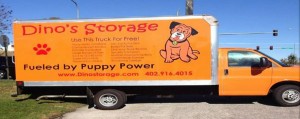Apple, Honda, GE – these are just three of the brands familiar to consumers around the world. Brand names, though intangible assets, can be worth billions of dollars.
Generally, brand valuations are based on three factors: how well a brand is known, how well it is regarded and how much it contributes to the parent company’s financial success. Most of the brands on the list compled by 24/7 Wall St. exhibit strength across all of these categories.
The majority of the 100 brands are household names in Canada and the United States. Tens of millions of consumers in these nations either use or own products of all of the brands at the very top of the list. These brands also generate tens of billions of dollars in revenue for their parent companies each year.
Some companies are synonymous with their brands. McDonald’s, with a brand valuation of $41.5 billion is an example of this. The fast food company does not have any other major brands. Brands and companies are not interchangeable terms. Companies often own more than one brand on this list. For example, the Volkswagen Group flagship brand, Volkswagen, is worth $11.5 billion. Its Audi luxury brand is worth $12.0 billion. Its Porsche ultra-luxury brand is worth $10.1 billion. Coca-Cola, the fourth most valuable brand on the list at $69.7 billion is owned by The Coca-Cola Company, which also owns more than a dozen other brands, including Sprite and Fresca.
Here’s the list:
1. Apple (NASDAQ: AAPL)
Brand value: $184.2 billion
YoY change in value: 3%
Parent company: Apple Inc.
Parent company revenue: $215.6 billion
Industry: Technology
2. Google (NASDAQ: GOOGL)
Brand value: $141.7 billion
YoY change in value: 6%
Parent company: Alphabet Inc.
Parent company revenue: $90.3 billion
Industry: Technology
3. Microsoft (NASDAQ: MSFT)
Brand value: $80.0 billion
YoY change in value: 10%
Parent company: Microsoft Corporation
Parent company revenue: $85.3 billion
Industry: Technology
4. Coca-Cola (NYSE: KO)
Brand value: $69.7 billion
YoY change in value: -5%
Parent company: The Coca-Cola Company
Parent company revenue: $41.9 billion
Industry: Beverages
5. Amazon (NASDAQ: AMZN)
Brand value: $64.8 billion
YoY change in value: 29%
Parent company: Amazon.com, Inc.
Parent company revenue: $136.0 billion
Industry: Retail
6. Samsung
Brand value: $56.2 billion
YoY change in value: 9%
Parent company: Samsung Electronics Co., Ltd.
Parent company revenue: $176.2 billion
Industry: Technology
7. Toyota (NYSE: TM)
Brand value: $50.3 billion
YoY change in value: -6%
Parent company: Toyota Motor Corporation
Parent company revenue: $244.5 billion
Industry: Automotive
8. Facebook (NASDAQ: FB)
Brand value: $48.2 billion
YoY change in value: 48%
Parent company: Facebook, Inc.
Parent company revenue: $27.6 billion
Industry: Technology
9. Mercedes-Benz
Brand value: $47.8 billion
YoY change in value: 10%
Parent company: Daimler
Parent company revenue: $180.1 billion
Industry: Automotive
10. IBM (NYSE: IBM)
Brand value: $46.8 billion
YoY change in value: -11%
Parent company: International Business Machines Corporation
Parent company revenue: $79.9 billion
Industry: Business Services
11. GE (NYSE: GE)
Brand value: $44.2 billion
YoY change in value: 3%
Parent company: General Electric Company
Parent company revenue: $123.7 billion
Industry: Diversified
12. McDonald’s (NYSE: MCD)
Brand value: $41.5 billion
YoY change in value: 5%
Parent company: McDonald’s Corporation
Parent company revenue: $24.6 billion
Industry: Restaurants
13. BMW
Brand value: $41.5 billion
YoY change in value: 0%
Parent company: BMW Group
Parent company revenue: $110.6 billion
Industry: Automotive
14. Disney (NYSE: DIS)
Brand value: $40.8 billion
YoY change in value: 5%
Parent company: The Walt Disney Company
Parent company revenue: $55.6 billion
Industry: Media
15. Intel (NASDAQ: INTC)
Brand value: $39.5 billion
YoY change in value: 7%
Parent company: Intel Corporation
Parent company revenue: $59.4 billion
Industry: Technology
16. Cisco (NASDAQ: CSCO)
Brand value: $31.9 billion
YoY change in value: 3%
Parent company: Cisco Systems, Inc.
Parent company revenue: $49.2 billion
Industry: Technology
17. Oracle (NYSE: ORCL)
Brand value: $27.5 billion
YoY change in value: 3%
Parent company: Oracle Corporation
Parent company revenue: $37.7 billion
Industry: Technology
18. Nike (NYSE: NKE)
Brand value: $27.0 billion
YoY change in value: 8%
Parent company: Nike, Inc.
Parent company revenue: $34.4 billion
Industry: Sporting Goods
19. Louis Vuitton
Brand value: $22.9 billion
YoY change in value: -4%
Parent company: LVMH Moët Hennessy Louis Vuitton S.E.
Parent company revenue: $44.2 billion
Industry: Luxury
20. Honda (NYSE: HMC)
Brand value: $22.7 billion
YoY change in value: 3%
Parent company: Honda Motor Company, Ltd.
Parent company revenue: $124.3 billion
Industry: Automotive
21. SAP (NYSE: SAP)
Brand value: $22.6 billion
YoY change in value: 6%
Parent company: SAP SE
Parent company revenue: $25.9 billion
Industry: Technology
22. Pepsi (NYSE: PEP)
Brand value: $20.5 billion
YoY change in value: 1%
Parent company: Pepsico, Inc.
Parent company revenue: $62.8 billion
Industry: Beverages
23. H&M
Brand value: $20.5 billion
YoY change in value: -10%
Parent company: H & M Hennes & Mauritz AB
Parent company revenue: $23.6 billion
Industry: Apparel
24. Zara
Brand value: $18.6 billion
YoY change in value: 11%
Parent company: Inditex
Parent company revenue: $27.4 billion
Industry: Apparel
25. IKEA
Brand value: $18.5 billion
YoY change in value: 4%
Parent company: IKEA Group
Parent company revenue: $41.2 billion
Industry: Retail
26. Gillette (NYSE: PG)
Brand value: $18.2 billion
YoY change in value: -9%
Parent company: The Procter & Gamble Company
Parent company revenue: $65.1 billion
Industry: FMCG
27. American Express (NYSE: AXP)
Brand value: $17.8 billion
YoY change in value: -3%
Parent company: American Express Company
Parent company revenue: $33.8 billion
Industry: Financial Services
28. Pampers (NYSE: PG)
Brand value: $16.4 billion
YoY change in value: 2%
Parent company: The Procter & Gamble Company
Parent company revenue: $65.1 billion
Industry: FMCG
29. UPS (NYSE: UPS)
Brand value: $16.4 billion
YoY change in value: 7%
Parent company: United Parcel Service, Inc.
Parent company revenue: $60.9 billion
Industry: Logistics
30. J.P. Morgan (NYSE: JPM)
Brand value: $15.7 billion
YoY change in value: 11%
Parent company: J.P. Morgan Chase & Co.
Parent company revenue: $95.7 billion
Industry: Financial Services
31. Budweiser (NYSE: BUD)
Brand value: $15.4 billion
YoY change in value: 2%
Parent company: Anheuser-Busch Inbev S.A.
Parent company revenue: $45.5 billion
Industry: Alcohol
32. Hermès
Brand value: $14.2 billion
YoY change in value: 11%
Parent company: Hermès International S.A.
Parent company revenue: $6.1 billion
Industry: Luxury
33. Ford (NYSE: F)
Brand value: $13.6 billion
YoY change in value: 5%
Parent company: Ford Motor Company
Parent company revenue: $151.8 billion
Industry: Automotive
34. eBay (NASDAQ: EBAY)
Brand value: $13.2 billion
YoY change in value: 1%
Parent company: eBay Inc.
Parent company revenue: $9.0 billion
Industry: Retail
35. Hyundai
Brand value: $13.2 billion
YoY change in value: 5%
Parent company: Hyundai Motor Company
Parent company revenue: $81.9 billion
Industry: Automotive
36. NESCAFÉ
Brand value: $12.7 billion
YoY change in value: 1%
Parent company: Nestlé
Parent company revenue: $91.9 billion
Industry: Beverages
37. Accenture (NYSE: ACN)
Brand value: $12.5 billion
YoY change in value: 4%
Parent company: Accenture Plc
Parent company revenue: $32.9 billion
Industry: Business Services
38. Audi
Brand value: $12.0 billion
YoY change in value: 2%
Parent company: Volkswagen Group
Parent company revenue: $255.2 billion
Industry: Automotive
39. Nissan
Brand value: $11.5 billion
YoY change in value: 4%
Parent company: Nissan Motor Co., LTD.
Parent company revenue: $103.9 billion
Industry: Automotive
40. Volkswagen
Brand value: $11.5 billion
YoY change in value: 1%
Parent company: Volkswagen Group
Parent company revenue: $255.2 billion
Industry: Automotive
41. Philips (NYSE: PHG)
Brand value: $11.5 billion
YoY change in value: 2%
Parent company: Koninklijke Philips N.V.
Parent company revenue: $28.8 billion
Industry: Electronics
42. AXA
Brand value: $11.1 billion
YoY change in value: 5%
Parent company: AXA
Parent company revenue: $177.7 billion
Industry: Financial Services
43. Kellogg’s (NYSE: K)
Brand value: $11.0 billion
YoY change in value: -6%
Parent company: Kellogg Company
Parent company revenue: $13.0 billion
Industry: FMCG
44. Goldman Sachs (NYSE: GS)
Brand value: $10.9 billion
YoY change in value: 16%
Parent company: The Goldman Sachs Group, Inc.
Parent company revenue: $30.6 billion
Industry: Financial Services
45. L’Oréal
Brand value: $10.7 billion
YoY change in value: -2%
Parent company: L’Oréal
Parent company revenue: $29.2 billion
Industry: FMCG
46. Citi (NYSE: C)
Brand value: $10.6 billion
YoY change in value: 3%
Parent company: Citigroup Inc.
Parent company revenue: $62.6 billion
Industry: Financial Services
47. HSBC (NYSE: HSBC)
Brand value: $10.5 billion
YoY change in value: 1%
Parent company: HSBC Holdings plc
Parent company revenue: $44.6 billion
Industry: Financial Services
48. Porsche
Brand value: $10.1 billion
YoY change in value: 6%
Parent company: Volkswagen Group
Parent company revenue: $255.2 billion
Industry: Automotive
49. Allianz
Brand value: $10.1 billion
YoY change in value: 6%
Parent company: Allianz SE
Parent company revenue: $143.8 billion
Industry: Financial Services
50. Siemens
Brand value: $10.0 billion
YoY change in value: 6%
Parent company: Siemens AG
Parent company revenue: $93.6 billion
Industry: Diversified
51. Gucci
Brand value: $10.0 billion
YoY change in value: 6%
Parent company: Kering Group
Parent company revenue: $14.6 billion
Industry: Luxury
52. Canon (NYSE: CAJ)
Brand value: $9.8 billion
YoY change in value: -12%
Parent company: Canon Inc.
Parent company revenue: $30.2 billion
Industry: Electronics
53. HP (NYSE: HPE)
Brand value: $9.5 billion
YoY change in value: -8%
Parent company: Hewlett Packard Enterprise Company
Parent company revenue: $50.1 billion
Industry: Technology
54. Danone
Brand value: $9.3 billion
YoY change in value: 1%
Parent company: Danone
Parent company revenue: $25.8 billion
Industry: FMCG
55. Adidas
Brand value: $9.2 billion
YoY change in value: 17%
Parent company: Adidas AG
Parent company revenue: $22.7 billion
Industry: Sporting Goods
56. Adobe (NASDAQ: ADBE)
Brand value: $9.1 billion
YoY change in value: 19%
Parent company: Adobe Systems Incorporated
Parent company revenue: $5.9 billion
Industry: Technology
57. Hewlett Packard Enterprise (NYSE: HPE)
Brand value: $9.0 billion
YoY change in value: -19%
Parent company: Hewlett Packard Enterprise Company
Parent company revenue: $50.1 billion
Industry: Technology
58. 3M (NYSE: MMM)
Brand value: $8.9 billion
YoY change in value: 9%
Parent company: 3M Company
Parent company revenue: $30.1 billion
Industry: Diversified
59. Nestlé
Brand value: $8.7 billion
YoY change in value: 0%
Parent company: Nestlé
Parent company revenue: $92.0 billion
Industry: FMCG
60. Starbucks (NASDAQ: SBUX)
Brand value: $8.7 billion
YoY change in value: 16%
Parent company: Starbucks Corporation
Parent company revenue: $21.3 billion
Industry: Restaurants
61. Sony (NYSE: SNE)
Brand value: $8.5 billion
YoY change in value: 2%
Parent company: Sony Corporation
Parent company revenue: $57.1 billion
Industry: Electronics
62. Colgate (NYSE: CL)
Brand value: $8.3 billion
YoY change in value: -1%
Parent company: Colgate-Palmolive Company
Parent company revenue: $15.2 billion
Industry: FMCG
63. Morgan Stanley (NYSE: MS)
Brand value: $8.2 billion
YoY change in value: 14%
Parent company: Morgan Stanley
Parent company revenue: $34.6 billion
Industry: Financial Services
64. Visa (NYSE: V)
Brand value: $7.8 billion
YoY change in value: 1%
Parent company: Visa Inc.
Parent company revenue: $15.1 billion
Industry: Financial Services
65. Cartier
Brand value: $7.5 billion
YoY change in value: -2%
Parent company: Compagnie Financière Richemont S.A.
Parent company revenue: $12.5 billion
Industry: Luxury
66. Thomson Reuters (NYSE: TRI)
Brand value: $7.1 billion
YoY change in value: 4%
Parent company: Thomson Reuters Corp
Parent company revenue: $11.2 billion
Industry: Media
67. LEGO
Brand value: $7.0 billion
YoY change in value: 5%
Parent company: The Lego Group
Parent company revenue: $6.0 billion
Industry: FMCG
68. Santander
Brand value: $6.7 billion
YoY change in value: 8%
Parent company: Santander Bank
Parent company revenue: $51.6 billion
Industry: Financial Services
69. Kia
Brand value: $6.7 billion
YoY change in value: 6%
Parent company: Hyundai Motor Company
Parent company revenue: $81.9 billion
Industry: Automotive
70. Huawei
Brand value: $6.7 billion
YoY change in value: 14%
Parent company: Huawei Culture Co., Ltd.
Parent company revenue: $78.5 billion
Industry: Technology
71. Mastercard (NYSE: MA)
Brand value: $6.4 billion
YoY change in value: 11%
Parent company: Mastercard Incorporated
Parent company revenue: $10.8 billion
Industry: Financial Services
72. FedEx (NYSE: FDX)
Brand value: $6.3 billion
YoY change in value: 12%
Parent company: FedEx Corporation
Parent company revenue: $60.3 billion
Industry: Logistics
73. Land Rover (NYSE: TTM)
Brand value: $6.1 billion
YoY change in value: 7%
Parent company: Tata Motors Ltd.
Parent company revenue: $32.2 billion
Industry: Automotive
74. Johnson & Johnson (NYSE: JNJ)
Brand value: $6.0 billion
YoY change in value: 4%
Parent company: Johnson & Johnson
Parent company revenue: $71.9 billion
Industry: FMCG
75. Panasonic
Brand value: $6.0 billion
YoY change in value: -6%
Parent company: Panasonic Corporation
Parent company revenue: $65.1 billion
Industry: Electronics
76. DHL
Brand value: $5.7 billion
YoY change in value: 0%
Parent company: Deutsche Post DHL Group
Parent company revenue: $67.4 billion
Industry: Logistics
77. Harley-Davidson (NYSE: HOG)
Brand value: $5.7 billion
YoY change in value: 3%
Parent company: Harley-Davidson, Inc.
Parent company revenue: $6.0 billion
Industry: Automotive
78. Netflix (NASDAQ: NFLX)
Brand value: $5.6 billion
YoY change in value: 0%
Parent company: Netflix, Inc.
Parent company revenue: $8.8 billion
Industry: Media
79. Discovery (NASDAQ: DISCB)
Brand value: $5.4 billion
YoY change in value: -9%
Parent company: Discovery Communications, Inc.
Parent company revenue: $6.5 billion
Industry: Media
80. PayPal (NASDAQ: PYPL)
Brand value: $5.4 billion
YoY change in value: 12%
Parent company: PayPal Holdings, Inc.
Parent company revenue: $10.8 billion
Industry: Financial Services
81. Tiffany & Co. (NYSE: TIF)
Brand value: $5.4 billion
YoY change in value: -6%
Parent company: Tiffany & Co.
Parent company revenue: $4.0 billion
Industry: Luxury
82. Jack Daniel’s (NYSE: BF-B)
Brand value: $5.3 billion
YoY change in value: 3%
Parent company: Brown-Forman Corporation
Parent company revenue: $3.9 billion
Industry: Alcohol
83. KFC (NYSE: YUM)
Brand value: $5.3 billion
YoY change in value: -7%
Parent company: Yum! Brands, Inc.
Parent company revenue: $6.4 billion
Industry: Restaurants
84. Salesforce.com (NYSE: CRM)
Brand value: $5.2 billion
YoY change in value: 0%
Parent company: Salesforce.com Inc
Parent company revenue: $8.4 billion
Industry: Technology
85. Heineken
Brand value: $5.2 billion
YoY change in value: 1%
Parent company: Heineken International
Parent company revenue: $24.5 billion
Industry: Alcohol
86. Burberry
Brand value: $5.1 billion
YoY change in value: -4%
Parent company: Burberry Group Plc
Parent company revenue: $3.7 billion
Industry: Luxury
87. MINI
Brand value: $5.1 billion
YoY change in value: 3%
Parent company: BMW Group
Parent company revenue: $110.6 billion
Industry: Automotive
88. Ferrari (NYSE: RACE)
Brand value: $4.9 billion
YoY change in value: 0%
Parent company: Ferrari N.V.
Parent company revenue: $3.7 billion
Industry: Automotive
89. Caterpillar (NYSE: CAT)
Brand value: $4.9 billion
YoY change in value: -10%
Parent company: Caterpillar, Inc.
Parent company revenue: $38.5 billion
Industry: Diversified
90. Sprite (NYSE: KO)
Brand value: $4.8 billion
YoY change in value: -6%
Parent company: The Coca-Cola Company
Parent company revenue: $41.9 billion
Industry: Beverages
91. Shell (NYSE: RDS-B)
Brand value: $4.8 billion
YoY change in value: 5%
Parent company: Royal Dutch Shell Plc
Parent company revenue: $233.6 billion
Industry: Energy
92. John Deere (NYSE: DE)
Brand value: $4.8 billion
YoY change in value: -1%
Parent company: Deere & Company
Parent company revenue: $26.6 billion
Industry: Diversified
93. Corona (NYSE: BUD)
Brand value: $4.8 billion
YoY change in value: 6%
Parent company: Anheuser-Busch Inbev S.A.
Parent company revenue: $45.5 billion
Industry: Alcohol
94. Prada
Brand value: $4.7 billion
YoY change in value: -14%
Parent company: Prada Holding B.V.
Parent company revenue: $3.7 billion
Industry: Luxury
95. Dior
Brand value: $4.6 billion
YoY change in value: -7%
Parent company: Christian Dior S.E.
Parent company revenue: $44.6 billion
Industry: Luxury
96. Johnnie Walker (NYSE: DEO)
Brand value: $4.4 billion
YoY change in value: 2%
Parent company: Diageo Plc
Parent company revenue: $16.0 billion
Industry: Alcohol
97. Smirnoff (NYSE: DEO)
Brand value: $4.3 billion
YoY change in value: 1%
Parent company: Diageo Plc
Parent company revenue: $16.0 billion
Industry: Alcohol
98. Tesla (NASDAQ: TSLA)
Brand value: $4.0 billion
YoY change in value: 0%
Parent company: Tesla, Inc.
Parent company revenue: $7.0 billion
Industry: Automotive
99. Moët & Chandon
Brand value: $4.0 billion
YoY change in value: -3%
Parent company: LVMH Moët Hennessy Louis Vuitton S.E.
Parent company revenue: $44.2 billion
Industry: Alcohol
100. Lenovo
Brand value: $4.0 billion
YoY change in value: -1%
Parent company: Legend Holdings
Parent company revenue: $43.0 billion
Industry: Technology




